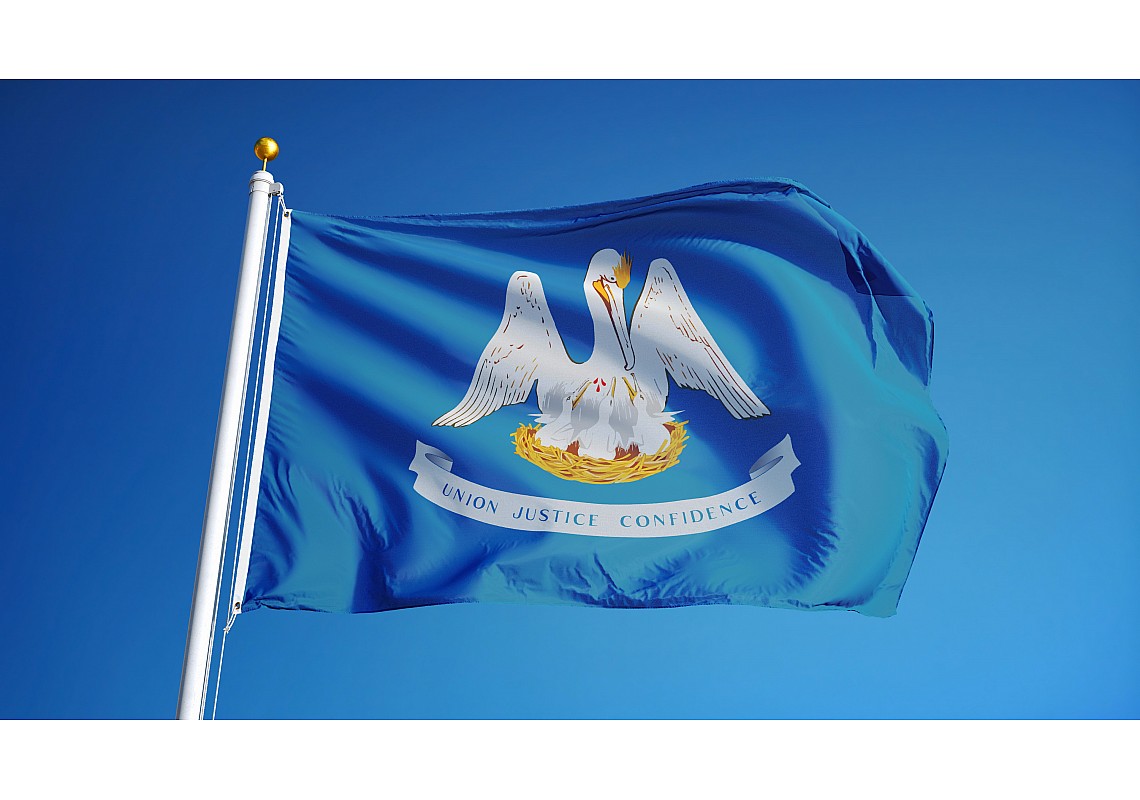For visitors to Louisiana, it’s easy to remember the most popular Cajun traditions like Mardi Gras, Cajun and Zydeco music, celebrations for every occasion and, of course, the delicious food that can only be found in South Louisiana. But one tradition you may not be so quick to remember is our unique state flag that depicts a pelican tearing at her breast to feed her young chicks. But why does that particular image grace the flag of Louisiana? We Cajuns take pride in the the history of that flag and the motto that accompanies it - “Union, Justice and Confidence.”
Flags Flown Over Louisiana
Prior to the Civil War, several different flag designs were flown in Louisiana, but the official design – still used on the flag today – was adopted in 1912 by the Louisiana State Legislature. Louisiana has flown more flags than any other state. With influence from both France and Spain, there’s speculation that more than 10 flags were flown as the official state flag, but the nine that came before the modern “Pelican State” flag are:
- Spanish Flag of Leone & Castile - Spain was the first to fly a flag in the 1500s.
- French Fleur-de-Lis - 1682, LaSalle annexes Louisiana for the French.
- British Grand Union Jack - 1763, Britain acquired Louisiana from the French.
- Bourbon Spain - 1769, The Spanish seized control of Louisiana.
- French Tri-Color - 1803, France regained Louisiana for a short time.
- U.S. Flag with 15 stars - 1803, The United States purchases Louisiana.
- West Florida Lone Star - American citizens took control in the Spanish parishes and flew one declaring it a territory.
- Independent Louisiana - 1861, For two months after seceding, Louisiana had an independent flag.
- Confederate Flag - 1862, Accepted as Louisiana’s state flag until 1912 when the modern “Pelican State” flag was adopted.
What’s On the State Flag?
Originating from an 1800’s design, today’s state flag displays a solid blue background with an Eastern Brown Pelican mother, in white and gold. She is shielding three chicks in their nest and tears at her flesh to feed them. Below her is the motto - "Union, Justice and Confidence" - printed in blue on a white and gold banner. This emblem was taken from the Louisiana state seal from the 1800s. The outstretched wings of the pelican resemble the fleur-de-lis of France, honoring the French influence on the original colony, and now is a common Louisiana symbol. The pelican itself has been a symbol of the piety and charity of the Catholic church since medieval times. This flag flew for nearly a century until a law passed in 2006 to reincorporate three drops of blood on the pelican’s breast. These subtle features were reintroduced to the flag based on historical research by a Houma, Louisiana, student who revealed that the three drops of blood were significant in the original flag but were eliminated for an unknown reason. In 2010, a new state flag was unveiled depicting a more regal, angular pelican and the symbolic three drops of red blood.
Why Was This Design Chosen?
Louisiana chose the pelican as its symbol for a state seal back in 17th century. Even further back, people believed that pelicans would feed blood to their starving chicks symbolizing self-sacrifice and dedication to progress. A well-known source, Mark Shields, who reports everything we need to know about pelicans says that the birds would never do that and would, instead, likely abandon the chicks. The drops of blood seen on the flag signify the honor and sacrifice the state offers to its citizens keeping that particular Cajun tradition alive. It can be found on:
- State Seal of Louisiana
- State Painting
- U.S. Mint's Louisiana bicentennial quarter (one of three symbols)
With influence from France, England and Spain, Louisiana’s culture is unlike any other. Regardless of where and when you visit Louisiana, the influences from those cultures remain evident today in our food, our communities and, of course, our flag.

